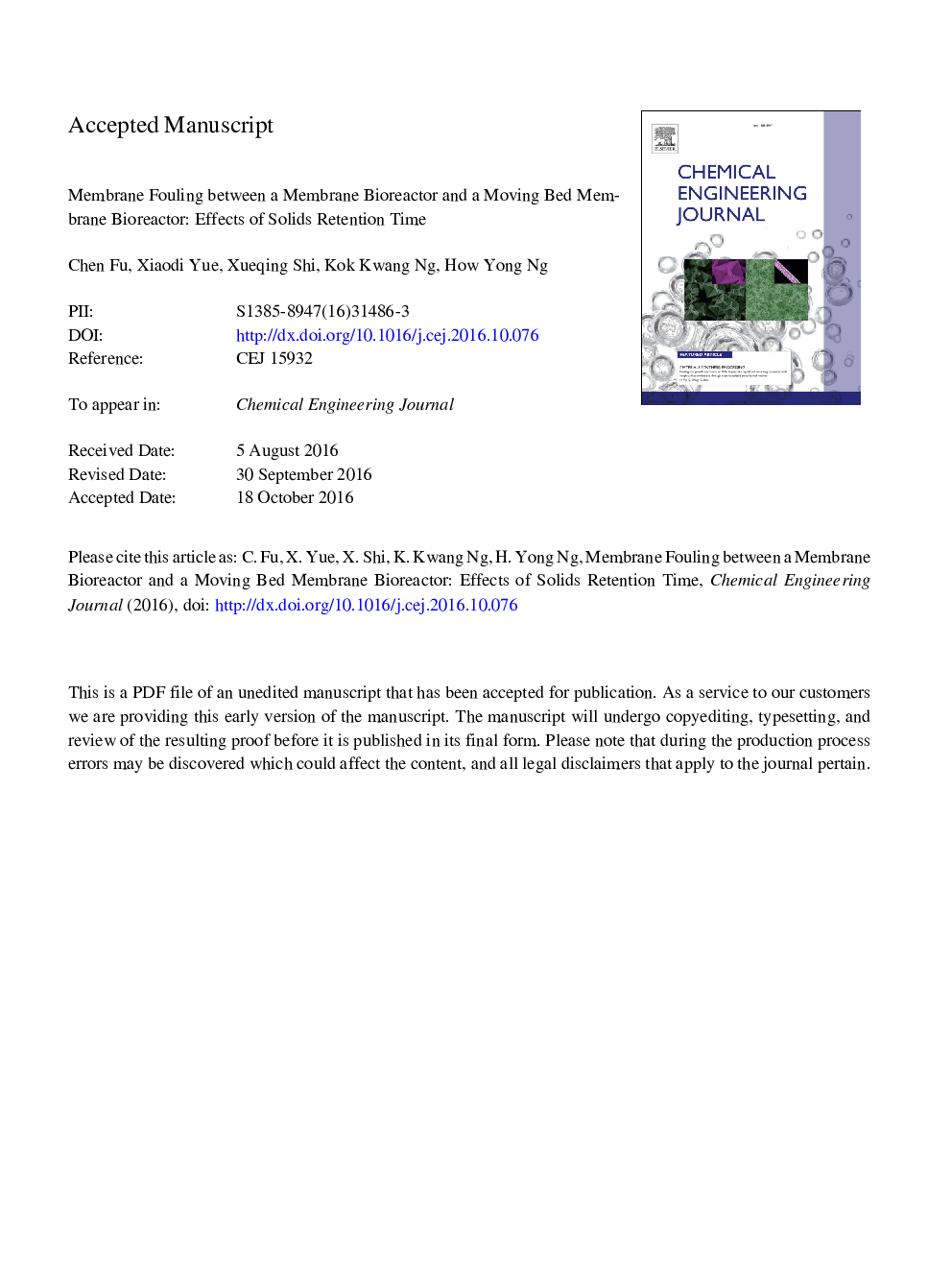| Article ID | Journal | Published Year | Pages | File Type |
|---|---|---|---|---|
| 4763608 | Chemical Engineering Journal | 2017 | 43 Pages |
Abstract
In this study, a control membrane bioreactor (MBR) and a moving bed membrane bioreactor (MBMBR) were operated in parallel treating real domestic wastewater at the different solids retention time (SRT) of 20, 10 and 5Â d to investigate the membrane fouling behaviors and microbial community structures. Both the MBR and MBMBR were found less prone to membrane fouling under the longer SRTs. The MBMBR showed consistently superior membrane filtration performance, and the extension of membrane filtration time was more pronounced at the shortest SRT. From the characterization of the mixed liquor suspensions, it was found that the mitigation of membrane fouling in the MBMBR was probably attributed to the lower concentrations of biopolymers (including proteins and carbohydrates) and low molecular weight (LMW) compounds in the mixed liquor supernatant (MLS). The findings were further justified by the analysis of organic fractions in the fouling cake layer, where the biopolymers were found to play a significant role in the cake layer formation. Through DNA pyrosequencing analysis which can reveal microbial community structures, the abundance of Nitrospira spp. (one of key bacterial populations responsible for nitrification) was found to be largely affected by the SRT. More Nitrospira spp. could develop in the attached biofilm than in the suspended biomass under the shorter SRTs of 10 and 5Â d. Furthermore, predominance of an uncultured bacterial genus within family Saprospiraceae was found in the MBMBR at all the examined SRTs, which can be an important explanation for its lower concentrations of carbohydrates and proteins in MLS of the MBMBR.
Keywords
Related Topics
Physical Sciences and Engineering
Chemical Engineering
Chemical Engineering (General)
Authors
Chen Fu, Xiaodi Yue, Xueqing Shi, Kok Kwang Ng, How Yong Ng,
